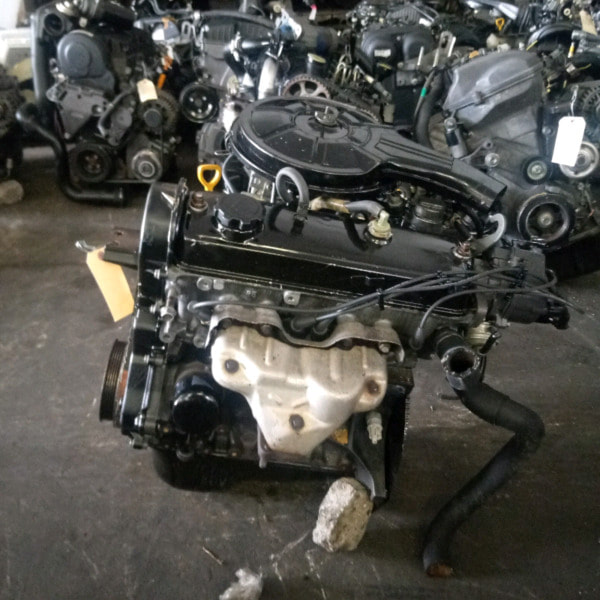Toyota Tazz: A Review of Its Handling, Fuel Economy, and Overall Performance
Check Out the Most Recent Trends in Engine Technology Through Tazz
In the quickly progressing landscape of auto technology, Tazz stands at the forefront, highlighting significant developments in engine systems that prioritize both development and sustainability. tazz. From hybrid engines that enhance fuel efficiency to the appearance of hydrogen gas cells, the patterns forming contemporary powertrains are not only improving performance but also resolving important ecological obstacles. As the sector remains to push limits, it is necessary to think about just how these growths will certainly influence future transportation solutions and the more comprehensive effects for international energy consumption. What exists in advance in this crucial improvement?
Hybrid Engine Innovations
Crossbreed engine advancements stand for a pivotal change in automotive modern technology, integrating the benefits of interior combustion engines with electrical propulsion systems. This integration not just enhances fuel effectiveness but additionally decreases exhausts, meeting progressively stringent ecological regulations. By using both energy resources, hybrid engines can optimize performance, supplying power when needed while saving gas during much less requiring motoring conditions.
Recent innovations in hybrid innovation consist of improvements in battery effectiveness and regenerative stopping systems. These innovations enable for higher energy recuperation during slowdown, which can be redirected to assist in velocity or power accessory systems. Producers are concentrating on portable designs and lightweight materials to optimize the performance of crossbreed powertrains.
The growth of plug-in crossbreeds has actually also expanded the market, enabling chauffeurs to charge their cars utilizing common electric outlets. This function commonly enables substantial all-electric array, more lowering reliance on standard fuels. tazz. As the automobile industry remains to develop, hybrid engine modern technologies are anticipated to play a critical duty in linking the void between traditional cars and fully electrical versions, supplying a transitional service that caters to diverse customer demands and choices
Developments in Electric Powertrains
The vehicle landscape is rapidly evolving, with electrical powertrains becoming a leading pressure in lasting transportation. Advances in electrical automobile (EV) innovation are significantly boosting performance, performance, and customer experience. Key advancements include renovations in battery chemistry, which have raised energy thickness, decreased billing times, and extended total battery life.
Solid-state batteries, as an example, guarantee to change the market by giving higher safety and security and performance compared to traditional lithium-ion cells. Developments in regenerative stopping systems are enabling vehicles to recuperate power throughout slowdown, adding to overall efficiency.
Along with battery innovation, electrical motor layouts are becoming a lot more innovative. Advancements such as integrated motors and progressed thermal monitoring systems are aiding to optimize power delivery and decrease weight, inevitably boosting lorry dynamics.

Collectively, these advances underscore the dedication to shift towards cleaner, much more reliable transport options, positioning electric powertrains at the center of auto advancement.
The Increase of Hydrogen Fuel Cells
Significantly, hydrogen fuel cells are acquiring grip as a sensible option to conventional inner burning engines and battery electric lorries. This Read Full Article innovation utilizes the chemical power saved in hydrogen, converting it into power with an electrochemical reaction with oxygen. The key by-product of this procedure is water, making hydrogen fuel cells an environmentally pleasant option with zero discharges at the tailpipe.

Automakers are progressively buying hydrogen gas cell technology, recognizing its potential for long-range applications and fast refueling abilities that measure up to standard gas. In addition, sectors such as heavy-duty transport and public transit are particularly well-suited for hydrogen gas cells, where battery electrical remedies might fail as a result of weight and array constraints.
As study and financial investment remain to increase, hydrogen gas cells are positioned to play a considerable function in the future landscape of clean transportation and energy solutions.
Enhancements in Internal Combustion Engines
Innovations in inner burning engine (ICE) modern technology are changing conventional cars to meet modern ecological criteria and performance expectations. Among one of the most substantial enhancements involves the integration of innovative gas injection systems. These systems maximize the air-fuel combination, enhancing combustion efficiency and causing minimized emissions. Direct gas injection, as an example, permits for far better atomization of fuel, leading to even more total burning and improved power output.
Furthermore, turbocharging has actually acquired prestige, enabling smaller sized engines to deliver greater performance without the weight of bigger engines - tazz. This technology not just boosts performance but likewise adds to decrease gas consumption. Variable shutoff timing systems are likewise being refined, allowing engines to adjust to various driving problems for boosted torque discover this info here and responsiveness
Furthermore, making use of lightweight materials in engine construction is ending up being basic, more enhancing fuel effectiveness by lowering overall automobile weight. Engine control devices (ECUs) are increasingly advanced, allowing real-time changes that enhance efficiency and exhausts.
These enhancements collectively represent an essential change in ICE technology, aligning with worldwide sustainability goals while still supplying the efficiency vehicle drivers anticipate from their automobiles. As the sector advances, these improvements continue to shape the future of conventional automobile engineering.
Future Patterns in Engine Effectiveness
Considerable innovations in engine performance are prepared for as suppliers focus on integrating innovative modern technologies to meet stringent ecological laws and customer needs. The change in the direction of electrification, hybrid systems, and alternative fuels is reshaping the auto landscape, driving developments that boost gas economic situation and lower exhausts.
One of the essential trends is the implementation of innovative products and producing methods. Lightweight composites and high-strength alloys add to minimized car weight, thus improving total effectiveness. Additionally, the fostering of turbocharging and variable shutoff timing innovations enables boosted power outcome from smaller engines, even more enhancing gas economic climate.

Verdict
Technologies in hybrid engine systems, electric powertrains, and hydrogen fuel cells demonstrate a commitment to decreasing discharges while improving efficiency. Enhancements in interior burning engines and an emphasis on lightweight materials contribute to general engine effectiveness.
From hybrid engines that enhance fuel effectiveness to the introduction of hydrogen gas cells, the patterns shaping contemporary powertrains are not only improving performance but also dealing with vital environmental challenges.Hybrid engine innovations stand for a crucial shift in auto modern technology, integrating the benefits of internal burning engines with electrical propulsion systems.Furthermore, turbocharging has acquired prominence, permitting smaller sized engines to provide higher efficiency without the weight of bigger engines. Furthermore, the adoption of turbocharging and variable shutoff timing innovations allows for improved power result from smaller engines, further boosting gas economic climate.
Improvements in inner burning engines and a focus on lightweight materials add to general engine efficiency.